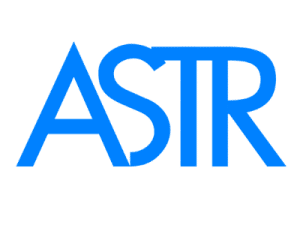The Hidden Dangers of the AIP Diet for Long-Term Gut Health
The Hidden Dangers of the AIP Diet for Long-Term Gut Health
The Autoimmune Protocol (AIP) diet is often praised for reducing inflammation and relieving autoimmune flares. But what many people don’t realize is that long-term use of the AIP diet may silently harm your gut health.
If you’ve been on AIP for months or even years and still struggle with fatigue, bloating, or immune flares—your gut microbiome may be out of balance due to unnecessary food restrictions.
Let’s look at why gut health matters and how the AIP diet—despite its benefits—can backfire over time.
Why Gut Health Is Central to Autoimmune Healing
Your gut isn’t just a digestive organ—it houses over 70% of your immune system and plays a major role in inflammation, nutrient absorption, and hormone balance. A healthy gut needs:
-
Microbiome diversity: A wide variety of beneficial bacteria
-
Adequate fiber: To feed those microbes and produce short-chain fatty acids (SCFAs)
-
Exposure to whole, plant-based foods
-
A resilient gut lining (no leaky gut)
📚 Belkaid & Hand, 2014; Sonnenburg & Bäckhed, 2016
1. The AIP Diet Significantly Reduces Fiber Intake
By eliminating legumes, grains, seeds, and nuts—the AIP diet drastically limits your sources of fermentable fibers, which your gut bacteria need to thrive.
Low fiber = low microbial diversity = higher inflammation.
Over time, this can result in:
-
Constipation or irregular digestion
-
Overgrowth of pathogenic bacteria (dysbiosis)
-
Poor immune tolerance (more food sensitivities, not less)
-
Reduced butyrate production (a key anti-inflammatory compound)
📚 Makki et al., 2018; Deehan et al., 2020
2. AIP May Starve the Microbiome
Your microbiome feeds on prebiotic fibers found in plant foods like beans, oats, lentils, and seeds. The AIP diet restricts many of these, leading to:
-
Loss of keystone bacterial species
-
Reduced microbial diversity
-
Weak gut barrier and leaky gut symptoms
-
Greater risk of chronic inflammation and autoimmune reactivation
📚 Zmora et al., 2018; Singh et al., 2017
3. Reintroductions Are Often Incomplete or Avoided
The AIP diet is meant to include a reintroduction phase, but many people:
-
Stay stuck in the elimination phase out of fear
-
Struggle with flares and give up
-
Never rebuild gut tolerance due to undernourished microbiota
This leads to long-term food restriction and increased food sensitivities—not fewer.
📚 Sonnenburg & Sonnenburg, 2015
4. AIP Doesn’t Address the Root Cause of Gut Imbalance
While AIP removes common triggers, it often fails to:
-
Heal the gut lining with restorative foods
-
Detox environmental toxins that damage gut tissue
-
Rebalance hormones that influence microbiome diversity
-
Target stress and HPA axis dysfunction, which alter gut permeability
The ASTR Diet: A Safer, Gut-Supportive Alternative
Dr. Joseph Jacobs developed the ASTR Diet after years of chronic fatigue, migraines, and gut inflammation. Unlike AIP, the ASTR Diet focuses on restoring gut health—not just removing food triggers.
Here’s how it helps:
✅ Includes gut-healing nutrients: bone broth, aloe vera, bitter greens, resistant starch
✅ Provides fermentable fibers from carefully selected gluten-free grains, root vegetables, and seeds
✅ Emphasizes microbiome diversity, liver detox, and hormonal support
✅ Avoids common disruptors like glyphosate, BPA, and emulsifiers
✅ Encourages safe reintroductions and long-term sustainability
📘 Learn more in Eat to Heal by Dr. Joseph Jacobs
AIP vs. ASTR for Gut Health
| Feature | AIP Diet | ASTR Diet |
|---|---|---|
| Removes immune triggers | ✅ | ✅ |
| Supports gut microbiome | ❌ | ✅ |
| Encourages fiber diversity | ❌ | ✅ |
| Promotes reintroduction and food tolerance | ⚠️ | ✅ |
| Long-term sustainability | ❌ | ✅ |
Final Thoughts: Healing Your Gut Means More Than Elimination
While AIP can reduce flares in the short term, it often lacks the tools to rebuild a strong, diverse, and resilient gut long term. If you’re still stuck on AIP or struggling with gut symptoms, it’s time to shift your approach.
The ASTR Diet provides a sustainable, science-based path to restore your gut and reverse autoimmune symptoms naturally.
📘 Start with Eat to Heal
👉 Book a free consultation with an ASTR-trained health coach:
🔗 Schedule here
Références
-
Belkaid, Y., & Hand, T. W. (2014). Role of the microbiota in immunity and inflammation. Cell, 157(1), 121–141. https://doi.org/10.1016/j.cell.2014.03.011
-
Sonnenburg, J. L., & Bäckhed, F. (2016). Diet–microbiota interactions. Science, 352(6285), 1392–1393. https://doi.org/10.1126/science.aad9359
-
Makki, K., et al. (2018). The impact of dietary fiber on gut microbiota in health and disease. Cell Host & Microbe, 23(6), 705–715. https://doi.org/10.1016/j.chom.2018.05.012
-
Deehan, E. C., et al. (2020). Precision nutrition and the microbiome. Cell Metabolism, 32(4), 571–582. https://doi.org/10.1016/j.cmet.2020.09.006
-
Zmora, N., et al. (2018). Personalized diet–microbiome interactions. Cell, 174(6), 1388–1405. https://doi.org/10.1016/j.cell.2018.07.046
-
Singh, R. K., et al. (2017). Influence of diet on the gut microbiome and implications for human health. Journal of Translational Medicine, 15(1), 73. https://doi.org/10.1186/s12967-017-1175-y
-
Sonnenburg, E. D., & Sonnenburg, J. L. (2015). Starving the microbiota: Modern diets and microbial extinction. Nature Reviews Microbiology, 13(6), 321–326. https://doi.org/10.1038/nrmicro3439

